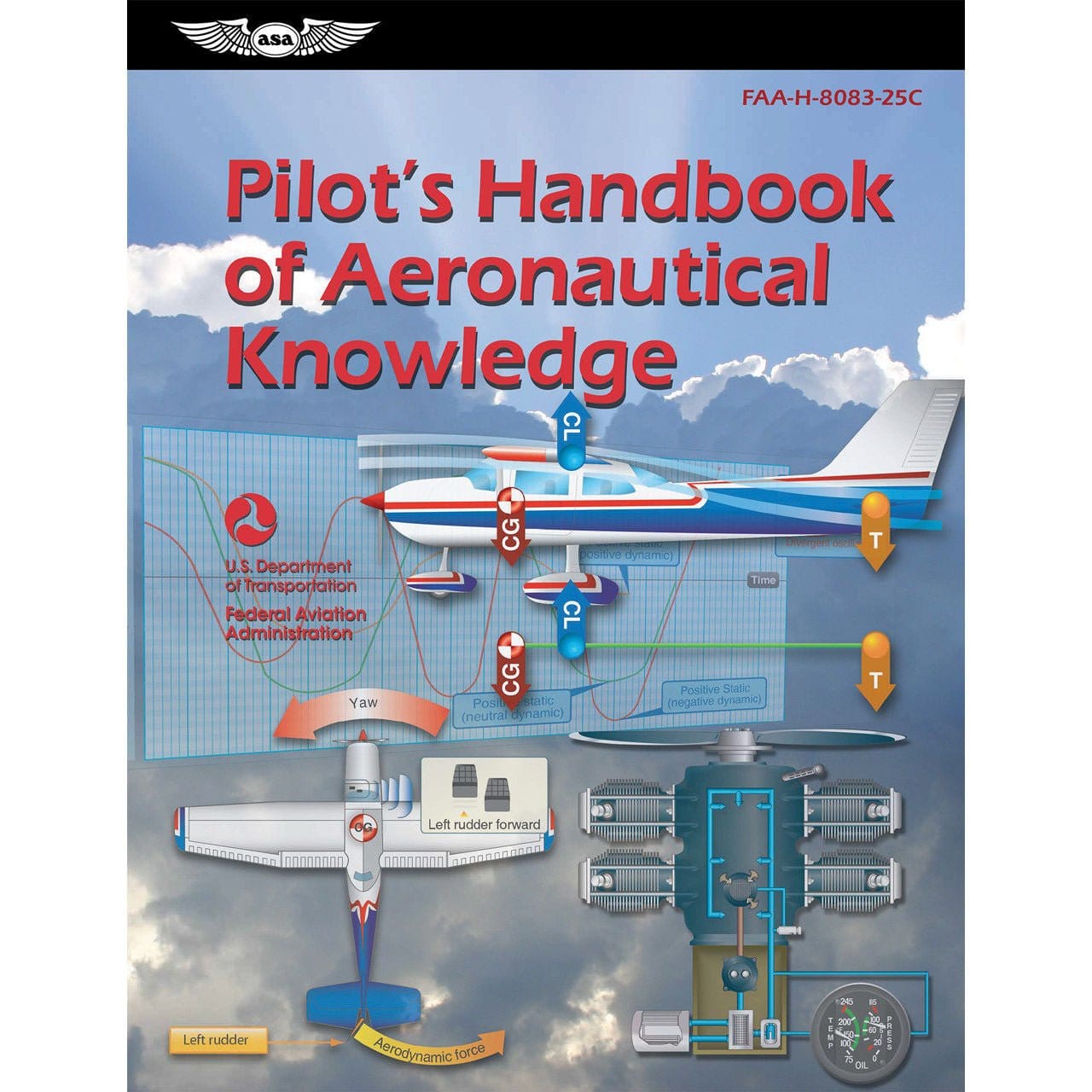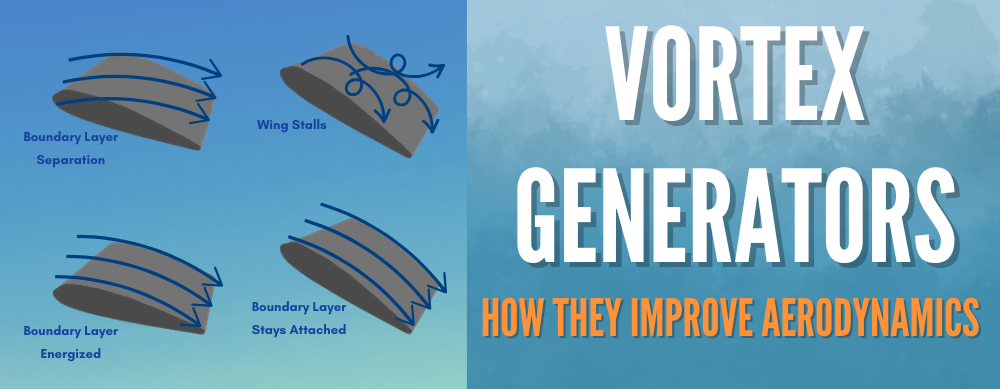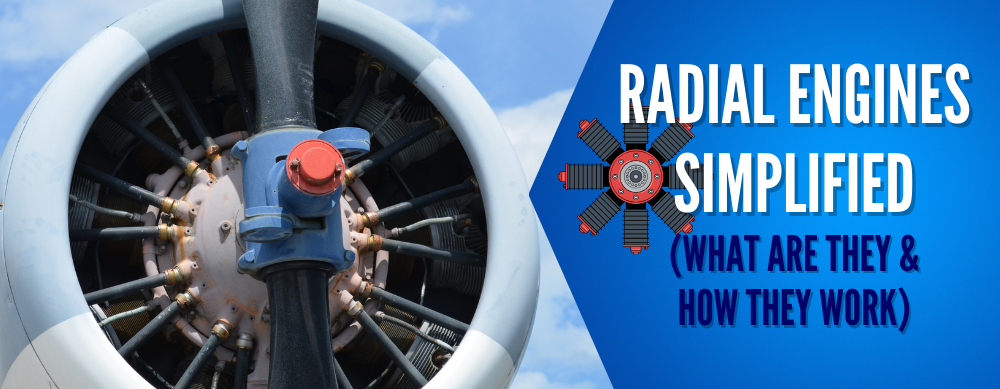As you prepare to land a Cessna 172, your heart starts racing when you notice a large jet in front of you. Before you can react, a powerful force slams into your plane, causing it to lurch to the side and roll uncontrollably. After regaining control, your passenger asks you what had happened.
All you can manage to say is, "Wake turbulence."
 What is Wake Turbulence?
What is Wake Turbulence?
Wake turbulence is the chaotic movement of air following an aircraft as it travels through the atmosphere. For fixed wing aircraft, a wake turbulence encounter is primarily generated by counter-rotating wingtip vortices and jets also generate wake turbulence in the form of jet wash.
The counter-rotating wingtip vortices form as the high-pressure air under the wings moves around the wingtips and swirls up into the lower pressure air on top.
Vortices are most pronounced when a plane is flying at a high angle of attack as is the case with takeoffs and landings.
When another aircraft intersects the path of these vortices before they have time to dissipate, the intersecting aircraft experiences wake turbulence.
 What are the Effects of Wake Turbulence?
What are the Effects of Wake Turbulence?
Anyone who has ever gone out on a boat, jet ski, kayak, or paddle board understands and appreciates the frustrations of intersecting the wake of another watercraft.
Sometimes the wake is minor and causes no problems, but when a small craft like a paddle board intersects the wake from a large fishing boat, the results can be disastrous.
The same is true in the air. Take for instance this Cessna 172 passing through the wake of a B-29 paired with the dramatic visual of the C-5A wing vortice test at NASA Langley Research Center.
The greater the size difference between the planes and the closer the smaller is to the fresh wake turbulence behind a larger aircraft, the more pronounced the wake turbulence will be.
Very strong wake turbulence can cause a rolling moment that exceeds the roll-control authority of the following plane and can cause structural damage.
Weight Categories and Wake Turbulence
The International Civil Aviation Organization (ICAO) uses Wake Turbulence Categories (WTC) to divide aircraft into three weight categories. Each category has distinct wake generation characteristics, and ATC can use these category assignments to help determine aircraft spacing needs in the air as well as for takeoff and landing.
Separation Distances
The minimum separation distances apply when both aircraft are traveling at the same altitude or less than 1,000 feet apart in altitude and one is following or crossing the path of the other.
For takeoffs and landings, it applies if both aircraft are using the same runway or adjacent parallel runways within 2,500 feet of each other.
Light
Light aircraft (Code L) weigh less than or equal to 7,000 kg (15,432 lbs). If a light aircraft is following a medium aircraft, a minimum separation of 5 nautical miles is required.
A light aircraft must allow a minimum separation of 6 nautical miles when traveling behind a heavy aircraft. A light aircraft must land no sooner than 3 minutes and take off no sooner than 2 minutes after a medium or heavy aircraft when conducting successive landings or full-length takeoffs.
Medium
Medium aircraft (Code M) weigh more than 7,000 kg (15,432 lbs) and less than 136,000 kg (299,828 lbs). A medium aircraft must fly at least 5 nautical miles behind a heavy aircraft. Medium aircraft must land and take off at least 2 minutes behind heavy aircraft during successive landings and full-length takeoffs.
Heavy
Heavy aircraft (Code H) weigh 136,000 kg (299,828 lbs) or more. A heavy aircraft must allow a minimum separation of at least 4 nautical miles between it and another heavy aircraft.
Wake Turbulence Recategorization (RECAT)
While every airplane generates wingtip vortices, the size and strength of the resulting wake varies depending on several factors. The FAA says that the “weight, speed, and wing shape and span of the generating aircraft” all play a role in wake turbulence.
The heavier the plane and the slower it is going, the more intense the wingtip vortices will be with wing design and aircraft configuration also factoring into determining the wake turbulence severity.
The FAA has recently begun rolling out a Wake Turbulence Recategorization (RECAT) program that takes not only aircraft weight but also wingspan and approach speed into account when determining minimum separation standards.
 How to Avoid Wake Turbulence
How to Avoid Wake Turbulence
Pilots can encounter wake turbulence during flight as well as on takeoffs and landings. For this reason it is important to understand the movement of wingtip vortices and be well versed in wake turbulence avoidance strategies.
Takeoffs
When departing after a larger aircraft, rotate prior to that aircraft’s rotation point since vortices are generated starting at the rotation point. Remain above the larger plane’s path as you make your ascent.
Landings
The calmer the air is, the slower vortices will dissipate. As vortices dissipate, they move downwards. For this reason, when landing behind a larger aircraft, it is best to stay above that plane’s final approach flight path and to land beyond its touchdown point.
En route & Traffic Pattern
While en route or in the traffic pattern, remain either above or at least 1,000 feet below larger aircraft. Under some conditions, ATC controllers may also announce “CAUTION – WAKE TURBULENCE” and give the position, altitude, and flight direction of larger aircraft that may adversely affect smaller planes in the area.
This warning information is helpful, but not always available, so pilots should not count on it to ensure wake turbulence avoidance.
 Ways to Recover From Wake Turbulence
Ways to Recover From Wake Turbulence
If you do encounter wake turbulence despite your attempts to avoid it, you will need to know how to recover. The longer your plane’s wingspan, the greater ability you will have to counteract the effects of the wake vortex roll.
First push the yoke forward to reduce angle of attack so you have better roll control with your ailerons. Add power. Use ailerons as needed to null the roll. Climb to regain lost altitude.
This is what a wake turbulence recovery looks like in practice.
Wake Turbulence Avoidance
The best way to deal with wake turbulence is to look for the signs. Are there larger aircraft in the pattern or along your flight path? Will you be landing behind an Airbus A380? Was there a helicopter hovering near the runway or beside it? If the answer is yes, then go around.
Do not attempt to salvage the landing and risk crossing the wake of the preceding aircraft again.
Want to learn about aviation weather?
Our guides are designed to help student pilots become professional pilots and for private pilots to brush up on their knowledge and skills.
-
7 Types of Turbulence Every Pilot Should Know (What Causes It)
-
Ditch the Rough Ride: How to Avoid Turbulence (And What to Do if You Can’t)
-
12 Types of Clouds Pilots Must Recognize [#12 Can be Deadly]
Did you find this article helpful?
Do you think we missed anything important? Let us know in the comments below!









